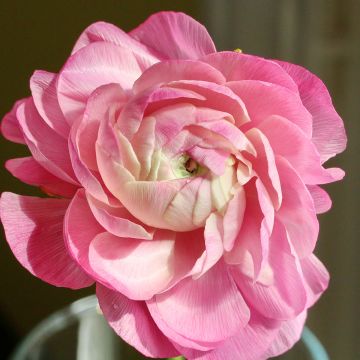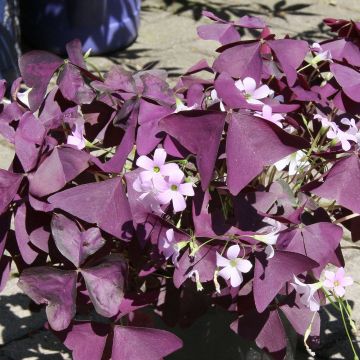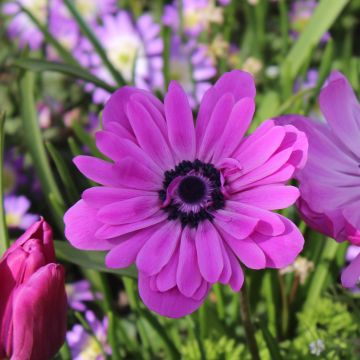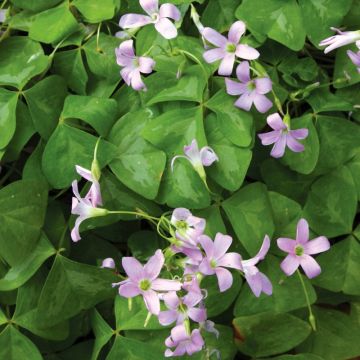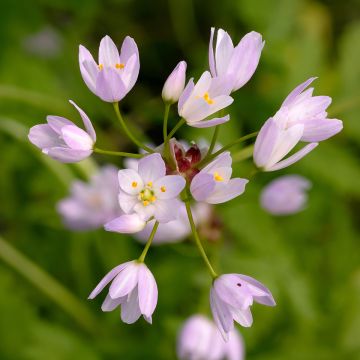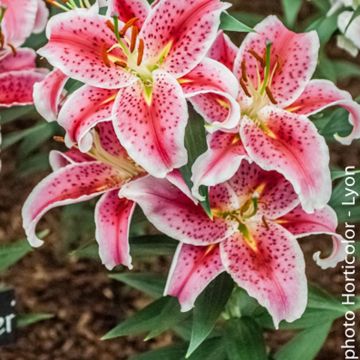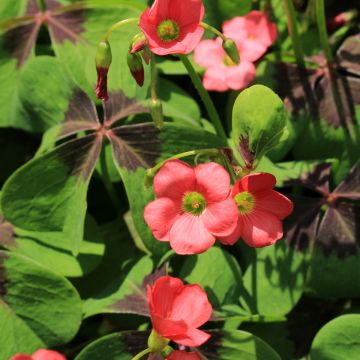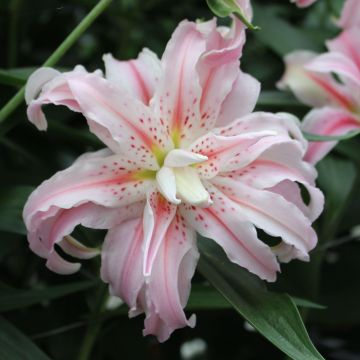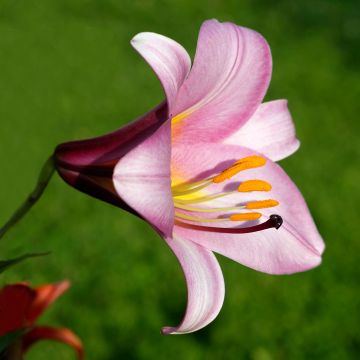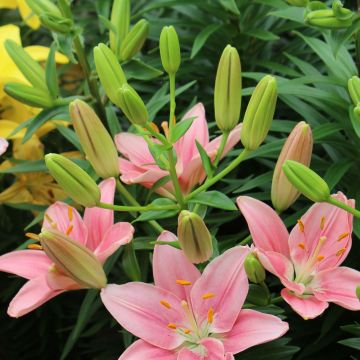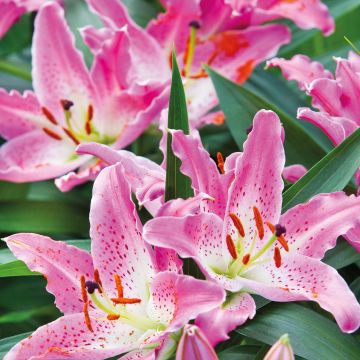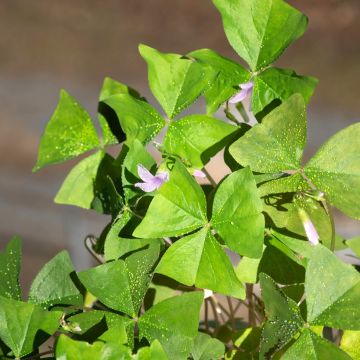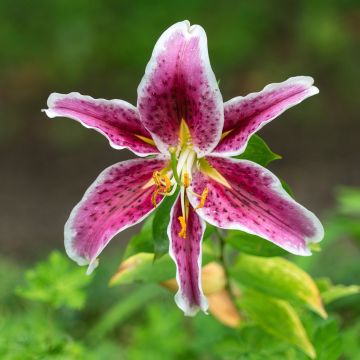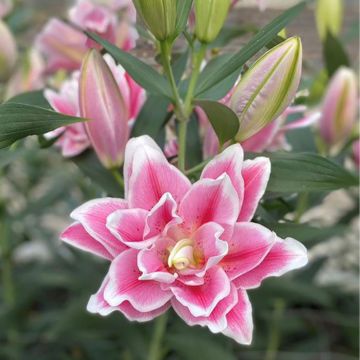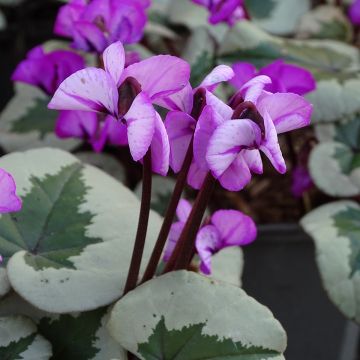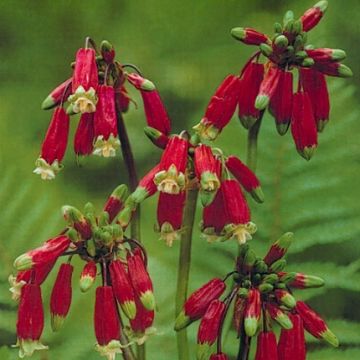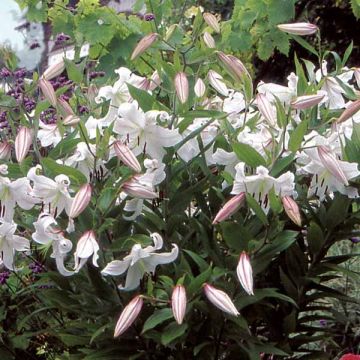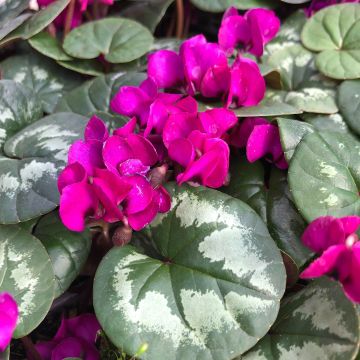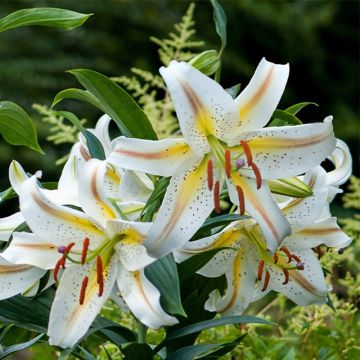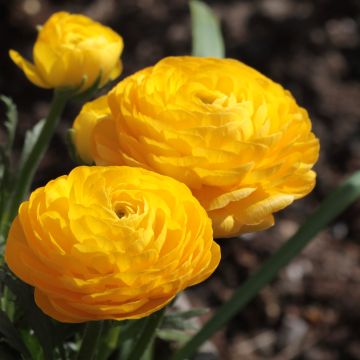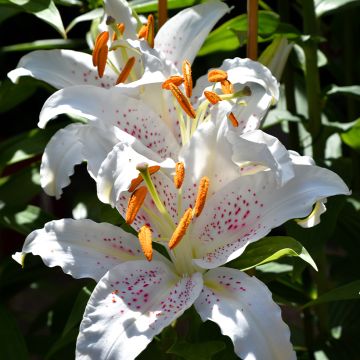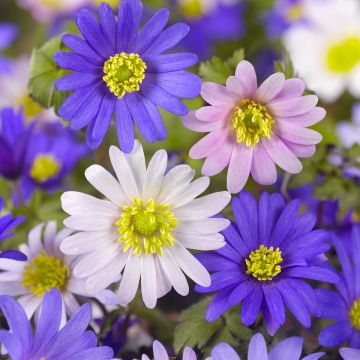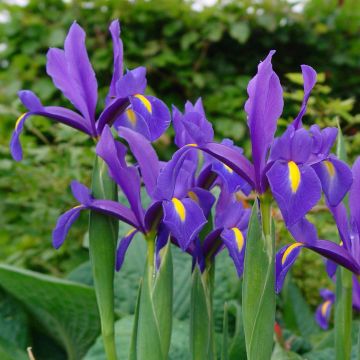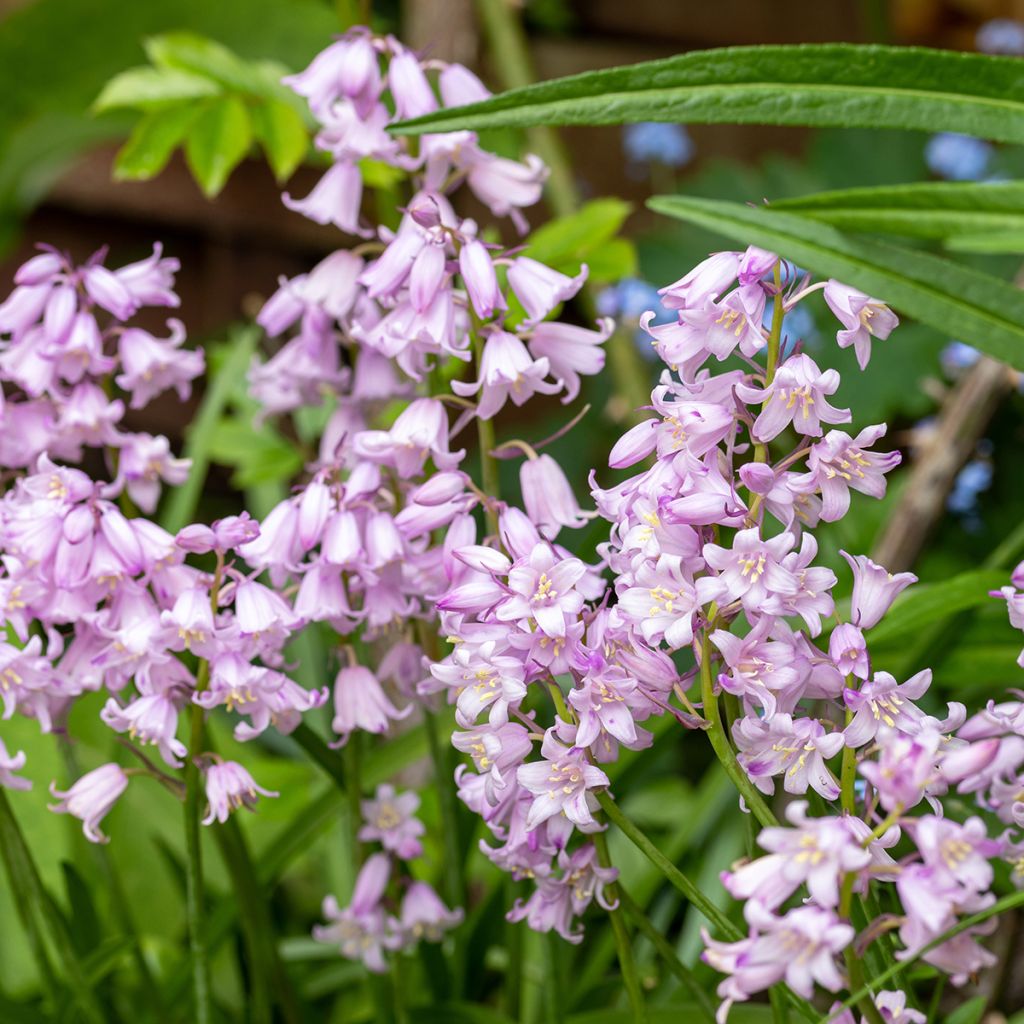

Hyacinthoides hispanica Rose Queen
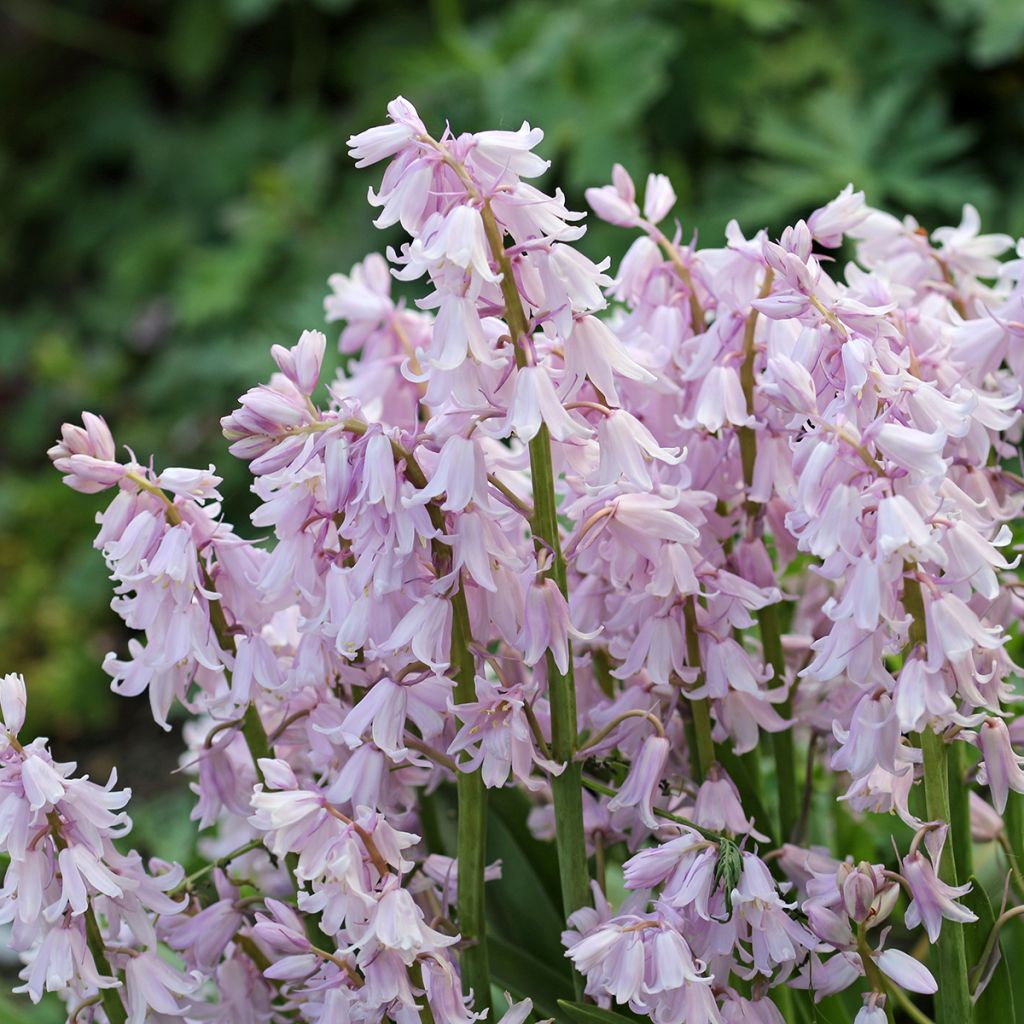

Hyacinthoides hispanica Rose Queen
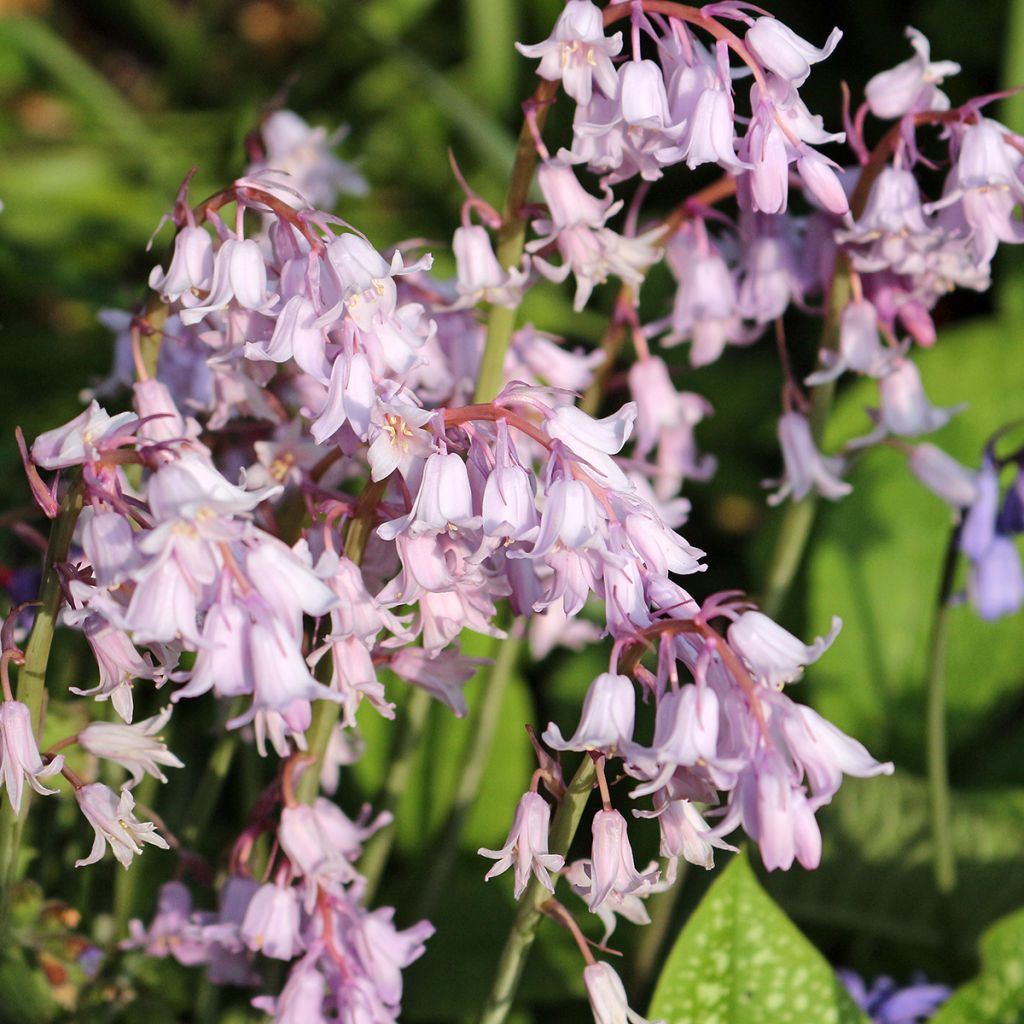

Hyacinthoides hispanica Rose Queen
Hyacinthoides hispanica Rose Queen
Hyacinthoides hispanica Rose Queen
Spanish Bluebell, Wood Hyacinth
Why not try an alternative variety in stock?
View all →This plant carries a 6 months recovery warranty
More information
We guarantee the quality of our plants for a full growing cycle, and will replace at our expense any plant that fails to recover under normal climatic and planting conditions.
From €5.90 for pickup delivery and €6.90 for home delivery
Express home delivery from €8.90.
Does this plant fit my garden?
Set up your Plantfit profile →
Description
The Hyacinthoides hispanica Rose Queen, is a lovely form with pale pink flowers of a botanical species commonly called Spanish Bluebell or Spanish Squill. The latter is often confused with the Common Bluebell (Hyacinthoides non-scripta), native to our woodlands. It is a perennial bulb that offers a very beautiful spring flowering, in the form of pink and trailing bell-shaped flowers that emerge from a clump of large strap-shaped leaves, displaying a beautiful fresh and shiny green colour. Easy to grow in partial shade, very hardy and very tolerant, it will easily naturalize in ordinary soil that is not too dry.
The Endymion hispanicus, another accepted name for the Spanish Bluebell, is a bulbous plant from the Asparagaceae family (subfamily Hyacinthaceae), native to southwestern Europe and North Africa. Its natural habitat corresponds to forest edges, fallow land, and deciduous woodlands (beech, oak, and chestnut), always in partial shade and in soils that remain somewhat moist. It is a prolific species, widely naturalized in France, where it competes and hybridizes very easily with our Common Bluebell (Hyacinthoides non-scripta), which enjoys the same environments. In some regions, it even tends to supplant it.
Anchored on a tall and narrow bulb, deeply embedded in the soil, the Rose Queen Spanish Bluebell multiplies through numerous stolons, eventually forming dense clumps of lanceolate leaves measuring 20 to 50 cm (8 to 20in) long and 3 to 4 cm (1 to 2in) wide at the base, wider than those of the Common Bluebell. The flowering stems emerge from late April to June depending on the climate. They rise 30-40 cm (12-16in) and bear clusters of 4 to 16 delicate pink flowers, bell-shaped with slightly flared rims, little or not at all recurved at their tips. The flowers are distributed around the stem, unlike those of the Common Bluebell, which are all positioned on the same side of the stem. The flowering gives way to globose fruits, while the leaves wilt on the ground. The seeds are released when all the aerial parts have dried up. Naturalizing both through its trailing rhizomes and spontaneous seedlings, the Spanish Bluebell is capable of covering the ground of an entire woodland.
The Rose Queen Spanish Bluebell offers the magnificent spectacle of its flowering, planted en masse, in the wilder areas of the garden, where it can spread freely. It will be perfect for edging a shaded path or beautifying the ground under a cluster of deciduous bushes. It will accompany with its fresh pink colour the blue flowering of the wild form, enhance the flowering of apple and cherry trees, composing a magnificent spectacle in spring, at little expense. It can also be associated with euphorbias as well as sturdy bulbs such as late single tulips (white, mauve) and botanical narcissus. Its flowers are also very beautiful in country bouquets.
Report an error about the product description
Plant habit
Flowering
Foliage
Botanical data
Hyacinthoides
hispanica
Rose Queen
Hyacinthaceae
Spanish Bluebell, Wood Hyacinth
Mediterranean
Other Spring bulbs A to Z
Planting and care
Very tolerant of soil conditions, the Spanish bluebell prefers well-amended soils, rich in organic matter, ideally clay-loam and not too dry. The Hyacinthoides hispanica is planted in September-October at a depth of about 15 cm (6in). This bulbous plant tolerates full shade perfectly, but prefers partial shade where it will receive some direct sunlight. It is very easy to grow. As soon as the conditions are met, which is very often, it multiplies through its rhizomes and self-seeds spontaneously. Remove faded flower stalks if you want to avoid spontaneous sowing. This plant is very sturdy and robust, with no specific enemies or diseases.
Planting period
Intended location
Care
This item has not been reviewed yet - be the first to leave a review about it.
Haven't found what you were looking for?
Hardiness is the lowest winter temperature a plant can endure without suffering serious damage or even dying. However, hardiness is affected by location (a sheltered area, such as a patio), protection (winter cover) and soil type (hardiness is improved by well-drained soil).

Photo Sharing Terms & Conditions
In order to encourage gardeners to interact and share their experiences, Promesse de fleurs offers various media enabling content to be uploaded onto its Site - in particular via the ‘Photo sharing’ module.
The User agrees to refrain from:
- Posting any content that is illegal, prejudicial, insulting, racist, inciteful to hatred, revisionist, contrary to public decency, that infringes on privacy or on the privacy rights of third parties, in particular the publicity rights of persons and goods, intellectual property rights, or the right to privacy.
- Submitting content on behalf of a third party;
- Impersonate the identity of a third party and/or publish any personal information about a third party;
In general, the User undertakes to refrain from any unethical behaviour.
All Content (in particular text, comments, files, images, photos, videos, creative works, etc.), which may be subject to property or intellectual property rights, image or other private rights, shall remain the property of the User, subject to the limited rights granted by the terms of the licence granted by Promesse de fleurs as stated below. Users are at liberty to publish or not to publish such Content on the Site, notably via the ‘Photo Sharing’ facility, and accept that this Content shall be made public and freely accessible, notably on the Internet.
Users further acknowledge, undertake to have ,and guarantee that they hold all necessary rights and permissions to publish such material on the Site, in particular with regard to the legislation in force pertaining to any privacy, property, intellectual property, image, or contractual rights, or rights of any other nature. By publishing such Content on the Site, Users acknowledge accepting full liability as publishers of the Content within the meaning of the law, and grant Promesse de fleurs, free of charge, an inclusive, worldwide licence for the said Content for the entire duration of its publication, including all reproduction, representation, up/downloading, displaying, performing, transmission, and storage rights.
Users also grant permission for their name to be linked to the Content and accept that this link may not always be made available.
By engaging in posting material, Users consent to their Content becoming automatically accessible on the Internet, in particular on other sites and/or blogs and/or web pages of the Promesse de fleurs site, including in particular social pages and the Promesse de fleurs catalogue.
Users may secure the removal of entrusted content free of charge by issuing a simple request via our contact form.
The flowering period indicated on our website applies to countries and regions located in USDA zone 8 (France, the United Kingdom, Ireland, the Netherlands, etc.)
It will vary according to where you live:
- In zones 9 to 10 (Italy, Spain, Greece, etc.), flowering will occur about 2 to 4 weeks earlier.
- In zones 6 to 7 (Germany, Poland, Slovenia, and lower mountainous regions), flowering will be delayed by 2 to 3 weeks.
- In zone 5 (Central Europe, Scandinavia), blooming will be delayed by 3 to 5 weeks.
In temperate climates, pruning of spring-flowering shrubs (forsythia, spireas, etc.) should be done just after flowering.
Pruning of summer-flowering shrubs (Indian Lilac, Perovskia, etc.) can be done in winter or spring.
In cold regions as well as with frost-sensitive plants, avoid pruning too early when severe frosts may still occur.
The planting period indicated on our website applies to countries and regions located in USDA zone 8 (France, United Kingdom, Ireland, Netherlands).
It will vary according to where you live:
- In Mediterranean zones (Marseille, Madrid, Milan, etc.), autumn and winter are the best planting periods.
- In continental zones (Strasbourg, Munich, Vienna, etc.), delay planting by 2 to 3 weeks in spring and bring it forward by 2 to 4 weeks in autumn.
- In mountainous regions (the Alps, Pyrenees, Carpathians, etc.), it is best to plant in late spring (May-June) or late summer (August-September).
The harvesting period indicated on our website applies to countries and regions in USDA zone 8 (France, England, Ireland, the Netherlands).
In colder areas (Scandinavia, Poland, Austria...) fruit and vegetable harvests are likely to be delayed by 3-4 weeks.
In warmer areas (Italy, Spain, Greece, etc.), harvesting will probably take place earlier, depending on weather conditions.
The sowing periods indicated on our website apply to countries and regions within USDA Zone 8 (France, UK, Ireland, Netherlands).
In colder areas (Scandinavia, Poland, Austria...), delay any outdoor sowing by 3-4 weeks, or sow under glass.
In warmer climes (Italy, Spain, Greece, etc.), bring outdoor sowing forward by a few weeks.

































